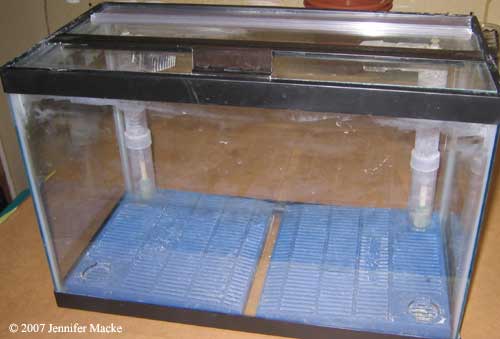
The problem: You don't want a tank with a bare glass bottom. It doesn't look very attractive, and the newts/axolotls have nothing to walk on. But if you add a layer of sand or gravel to a tank, you have a whole different set of problems to worry about: difficult cleaning and possible ingestion of substrate by the animals.
The solution: A permanent sand substrate that is glued into place.
 |
This is a free (used) 5.5-gallon tank that was given to me. At this point, I have already cleaned it some, removing the worst of the calcium deposits, scrubbing, and drying it. |
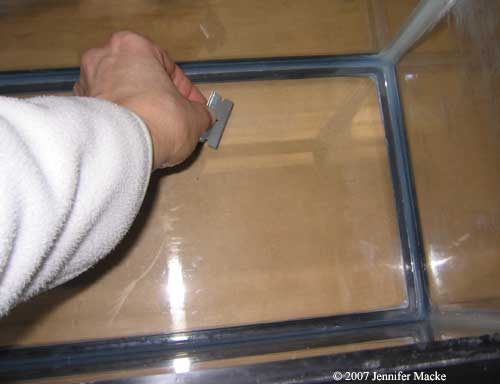 |
First step is additional cleaning. If it's a used tank, use a razor blade to clean all glass surface on the bottom of the tank. Be very careful not to damage the silicone seals that hold the tank together! If it's a new tank, just clean well with a sponge and dry thoroughly, then wipe the glass with rubbing alcohol. |
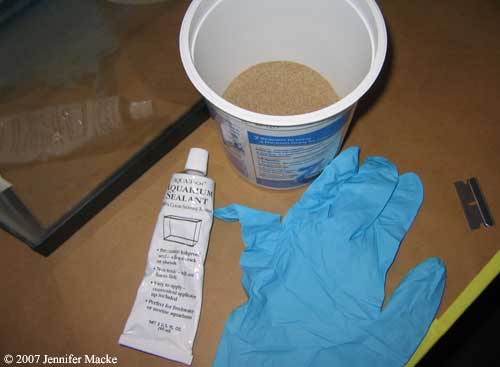 |
Ingredients list: 1 clean dry tank, aquarium silicone, disposable gloves, sand. |
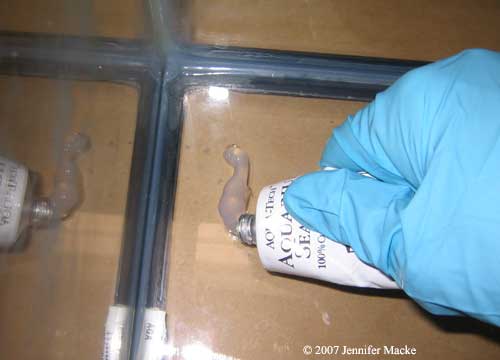 |
Put aquarium silicone in. |
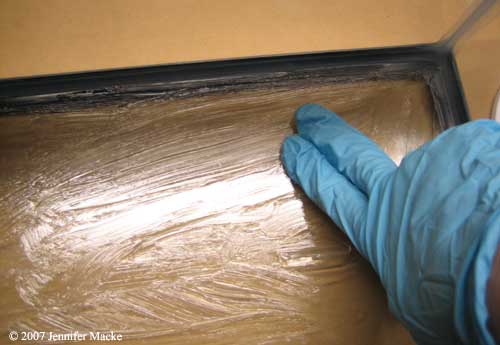 |
Smear it out evenly. You can use a thick or thin layer, as needed for the type of sand/gravel you are using. If you are using gravel or tiny pebbles in place of sand, you will need a thick layer of silicone. Remember that the thicker it is, the longer it takes to cure. |
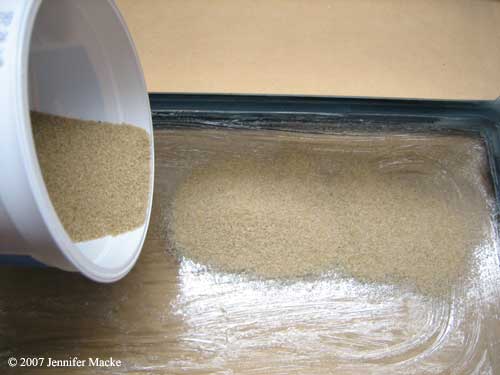 |
Add sand. Note: sand must be absolutely 100% dry! Use a clean glove to push the sand down into the silicone. What kind of sand? Any sand should be OK. Very little of the sand is actually going to be in contact with your tank water, so even sand from the seashore is probably OK. I use sand that is sold for use in swimming pool filters. Play sand tends to be powdery, but for this project it doesn't matter, as the grains will be glued into place. |
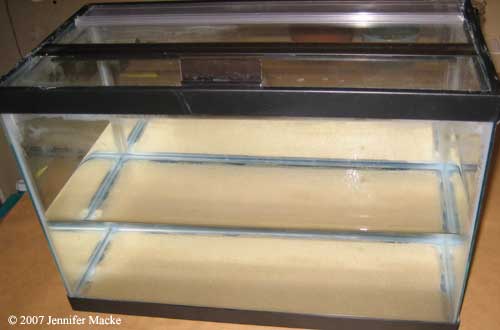 |
Allow 2 days or more for the silicone to completely cure, then add water. Note: if you used sand from the sea, or sand that was not thoroughly washed, let the tank soak for a few days at this point. Then dump the water and rinse thoroughly before using the tank for animals. |
©2007 Jennifer Macke